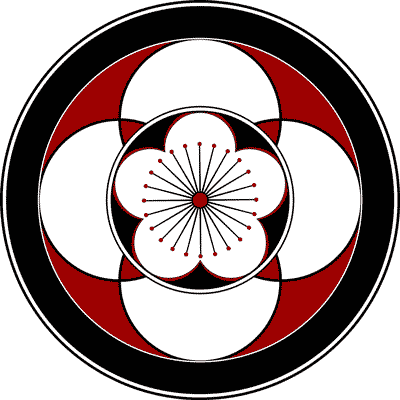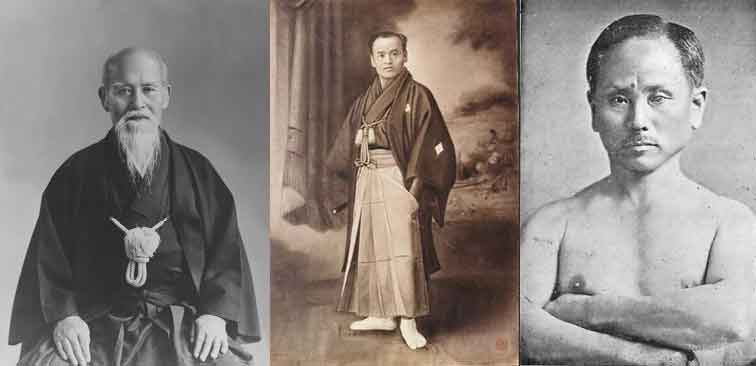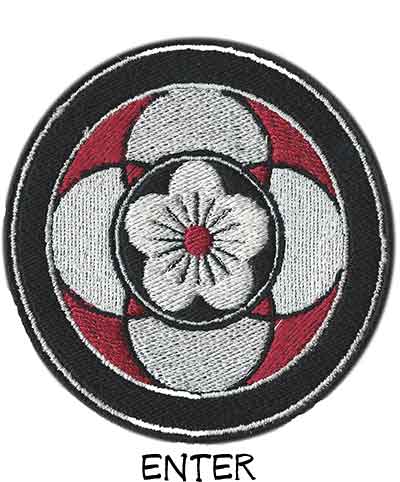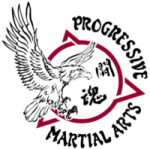

Ten Ume Ryu
天梅流 Traditional Combatives
Information PDF: Click here.
Attending class? : Please complete a liability waiver.
Youtube: Plum Dojo
Mobile? Swipe to cycle images

Ten Ume Ryu Traditional & Modern Martial Arts...
We aim to bring the best available traditional & modern martial arts and self-defense instruction to the Altoona, PA area. Our curriculum and methods have been actively developed through years of martial study and pressure training. This lets us give our students a rock-solid foundation and a confidence that they can believe in. Unlike many arts Ten Ume Ryū has a brutally honest approach to self defense and continues to raise awareness and teach the dangers of the one-time weekend self defense course and to be wary of the hive mind mentality present in many martial arts societies today.
We combat these frequently seen behaviors in the martial arts and self defense community with our strong focus on realistic application through proper technique disassembly and extraction. We also encourage students to devote time to the mental study of both self defense, and criminology to further understand violence as it stands today and how it has changed over time. However, accomplishing this requires both time and commitment from the student.
With these goals in mind, our physical training must reflect this ideology. Our training consists of the repetition and consistency necessary to build the proper mental and physical responses, as well as the required resistance to stress and pain through both mind and body conditioning. These are things that can't be gained in a short year, or at a weekend seminar.
Consequently due to our direct focus on learning self defense as a foundation, the new student focuses initially on western boxing, wrestling, and grappling techniques while building the initial skill set. Eventually as the student becomes more comfortable with their newly learned skills, traditional martial art techniques and methods are mixed in to get the student familiar with stance work and terminology. Doing so further pushes physical development in strength, speed, and fluidity while addressing the mental component as well. Once a strong foundation has been built, more advanced traditional techniques of karate and hapkido are taught as well, alongside their purpose with bunkai and ōyō.
Students of Ten Ume Ryū are heavily urged to promote peace. There is some reading on select topics including self defense, crime statistics, and martial arts through the ranks that are required as the student progresses. Students are also greatly encouraged to further their education on these topics outside of the dojo, and to focus on deescalation, diffusion, and prevention rather than retaliation after things have broken loose.
Why Traditional & Modern Martial Arts?
We believe strongly in modern boxing, wrestling, and grappling skills. However, we also believe the traditional techniques have their place, within reason and not taken out of context, in self defense and combat application. However it falls on instructors to be honest about the chance of these kinds of techniques working. Outside of physical skill, traditional martial arts also have a strong connection to the mind and promote spiritual development which is a large part of who we are as martial artists. One does not come without the other in a complete training program.
Have some more questions? Check out our FAQ and learn more about us.
Trouble finding an answer? : contact us.
Not quite what you're looking for...?
Looking for something else fitness related?
Our location provider and partner is:
Available at PMAS: Adult and Junior's Tae Kwon Do, 24/7 Gym Membership, and Cardio Kickboxing.
Ten Ume Ryu F.A.Q.
-
What is Ten Ume Ryu
-
What isn't Ten Ume Ryu
-
Okay, so it's Hapkido?
-
So what happened?
-
That's not convincing, why should I train with you?
-
This is confusing...
-
Is there rank?
-
Are there any major martial arts association affiliation?
-
Do you spar?
-
Do you use weapons?
-
Is this a real martial art?
-
Will it work in self defense?
-
How long to get my black belt?
-
Who are the instructors?
-
Do you teach kids?
-
What does Ten Ume Ryu mean?
-
Why Heavenly Plum Blossom?
-
Where/When are classes?
-
How can I join & cost?
Click titles below to expand/contract topics.
What is Ten Ume Ryu
Ten Ume Ryū is a gendai budō (現代武道) (Post-Meiji restoration martial art) curriculum formed primarily on our interpretation of our core style, hapkido, heavily influenced by both modern martial practices such as: wrestling, western boxing, jūdō, and Brazilian Jiujitsu as well as kobudō and koryū practices such as karate and aikijūjutsu respectively.
Ten Ume Ryū strives to bridge the commonly-present gap between traditional technique and modern application and uses the phrase "Traditional Combatives" as an insight to our thought process for both training and bunkai, meaning disassembly, though sometimes mistranslated as application. Many schools teach shapes and movements, but do not emphasize the principles that form the foundation required to blend traditional technique into practical combat.
The consequence of these methods generally lead to both over confidence in the practitioner as well as displays of overly showy techniques that essentially ask for the criticism they receive from practicality-based methods. Ten Ume Ryū's goal is not to eliminate these techniques, but to be honest about them. Many of the techniques that fall under this generalization are low success rate techniques that work well when attained, but will generally not work in the way that they appear to in a training environment.
The system has been in development a little over three years as of 2017. The curriculum is still being fine tuned by the instructors, however the kihon-waza ( basic technique ) requirements have been agreed upon, as well as the overall path of advancement through the curriculum.
What isn't Ten Ume Ryu
Ten Ume Ryū is neither a Koryū (古流) nor a Kobudō (古武道), so please do not confuse us with these. If that is what you are in search of please visit koryu.com for assistance in seeking out a legitimate source of tutelage.
We are not revolutionary. Much of what you learn here, you will most likely be able to learn from other sources.
We have no secret teachings or hidden deadly techniques. We are in essence, a what you see is what you get group.
Okay, so it's Hapkido?
Sort of, let us explain.
Our foundation is Hapkido and Brazillian Jiujitsu. We were primarily Hapkido/BJJ until the year 2014 before political rifts changed that. Since then our style has been influenced by the other arts we became involved in. Things primarily affected by cross training were things we found that we didn't do as well as we thought we did. Normally small tweaks, ideas, or outer input brought on "Aha!" moments that really brought some aspects of our hapkido to life.
So what happened?
There are some politics involved in our history that we will not divulge in publicly as we still have a high level of respect for our past instructors and federation regardless of political difference or disagreement. If you get to know us, you'll probably end up hearing some details, but at the end of the day we just had different visions on select topics. To our dismay, this action also severed our affiliations with larger martial arts associations that we were once associated with.
That's not convincing, why should I train with you?
If you like martial arts, you should probably at least come watch a class and meet us, it's completely free and always welcome.
We are a small eclectic group that is open minded and enjoys extra participants and company as well as other ideas to challenge our own thoughts and progress our learning.
Our philosophy is generally if everyone is always agreeing and never asking questions, that's not a strong environment to harbor growth.
This is confusing...
Don't let it be.
Simply put:
We are a group of martial artists with different backgrounds that get together three times a week, train together, and have managed to slowly build up a small student body around our curriculum.
We also like drop ins, so if you're a level headed martial artist not out to cause trouble we also welcome you.
Is there rank?
Again, sort of, we will explain:
We don't emphasize it too much since we aren't affiliated with any major organizations. We just want you to come train.
However, in the essence of fitting in with the modern martial arts culture we have a modern style 12 Kyu grading system in place for students of our curriculum.
If you're curious, that translates to 5 belts:
White -> Green -> Blue -> Brown -> Black
We are also fond of the BJJ striping system so we use stripes for grading steps as necessary.
There are no tests, and there are no promotion fees.
Finally, if you are yudansha in a different art, you are generally permitted to wear your rank after introduction.
Are there any major martial arts association affiliation?
At this moment, no.
We do however have small local affiliates that we recommend and cross train with when possible.
We are also currently partnered with Progressive Martial Arts as additional instructors to their martial arts program.
Large organization affiliation is great for some things, though finding an association that doesn’t require payment and hefty ranking fees to both instructors and students seems to be getting rare in modern budo organizations. Many associations are run like major businesses, and we strive to not be a part of that. We understand the need to pay the bills, but a lot of these organizations lean a little more towards the monetization side than what we are comfortable with asking our students to commit.
However, in saying this, we are searching for an organization in the Japanese Martial Arts Community as well as a Brazilian Jiujitsu organization with which to affiliate.
If and when those things happen, they will be noted here.
Do you spar?
Yes. Light, medium, and heavy, both stand-up and ground, as well as sport BJJ rolling at times.
A lot of our drills also fall under these categories.
Light, medium, and hard give different ideas to different people, so, in a nutshell:
Light: No gear, minimal contact and force, head generally prohibited outside of drilling.
Medium: Gear if desired, 30-50% force, loose light fist/palm head contact allowed.
Heavy: Head & mouthpiece minimum, chest, legs, arms, hands optional. 60-80% force.
Sparring is generally reserved to those who have come to a few classes - or those we know personally before training - to avoid bullying activity, anger/ self-control issues, or sandbagging by other people or groups.
Do you use weapons?
For the most part, no.
Mr. Gibbons is currently expanding his training in Okinawan Kobudo under the guidance of Kyoshi Doug Hoover in hopes of bringing it to the Ten Ume Ryῡ curriculum. If and when given permission and teaching authority from his instructors, kobudo weaponry will be taught as well within our group.
The exceptions to this rule are traditional bokken training and modern knife-defense principles, though our bokken training is very rare.
Is this a real martial art?
Ten Ume Ryū itself is certainly not known very well at all, as we are a very small group in the world of martial arts.
None the less, the major components that the principles are derived from are all from legitimate martial arts in which we train or have trained and have experience.
It is our hope that our specific curriculum will someday fall under one of our component styles as a known successor or branch.
Will it work in self defense?
Self-defense in modern society is primarily understanding violence and knowing the signs of it and when to get out - not being able to hurt people. So, on that note, yes. We talk about self defense a lot.
False confidence is instilled in many practitioners of martial arts around the world without any real knowledge of either physical confrontation or violence, and we strive to not let our students fall victim to this.
We also strongly recommend reading up on this and more at Marc MacYoung's website here. Please be aware that though extremely important to read on, there are adult topics on this website regarding violence, including but not limited to both criminal and sexual violence, so viewer discretion is advised.
We agree with the majority of Mr. MacYoung's views, and he is the easiest frame of reference for reading material pertaining to self-defense in its most raw form.
However, in the chance that you end up in a situation where handling violence with force is necessary, we have made absolutely sure that the basics we teach are very fundamental fighting techniques that are heavily composed of basic boxing, grip control, wrestling, clinch control, take downs, and handling the ground from a street oriented situation as opposed to sport grappling, even though we practice sport grappling as well.
We save a majority of the more traditional movements for after you get the basic fighting portions down and after we see you're interested in the art as whole and not just brawling.
Our teaching style is also very adamant in raising awareness of traditional techniques that may not be as applicable in many modern scenarios and in understanding that they are for extracting principles, skill building, and preservation of the art.
How long to get my black belt?
If that's your concern, Century Martial Arts sells them pretty cheap, or you can find someone who hands them out, though that doesn't come with a lot of true gratification. If you're dead set on getting one from us though, keep reading.
For mudansha ( Those without previous dan ranking ) - Typically 8 - 12 Years is expected
For yudansha ( Those with dan ranking ) - 2 - 6 years depending on style and skill.
A black belt from us on a global scale means virtually nothing. We are a small, unaccredited group. On an internal scale, anyone who knows us or trains with us knows we don't hand them out, so you can be sure you earned it and that it has merit to us and to them. On a personal scale it can mean whatever you want it to mean.
When we present you a black belt, we only have that. There are no higher dan gradings.
The only thing beyond black, rank wise, is permission to teach our curriculum, which will take more time and dedication.
Permission to teach could be viewed as similar, if familiar, to the idea of Menkyo in traditional Japanese terminology.
A yudansha from us says we trust you and view you as family to our Ryū. We expect you to respect the Ryū and its members. If and when given permission, we expect you to pass on our teachings as we taught them to you, even if alongside your own interpretation, to preserve the style and its ancestry.
It is a responsibility to our instructors, their instructors, and to our martial ancestors that our teachings do not get lost or twisted in the passing of time as many do.
Who are the instructors?
Adam Gibbons is the primary instructor for the Ten Ume Ryῡ curriculum.
Adam began his training in martial arts in 2001 under the instruction of Mr. George Kattouf, Mr. Robert Jeffco, and Mr. Patrick McDowell in Hapkido. Around 2008 BJJ was becoming integrated into the training and in 2010 Adam was promoted to Blue Belt in Yamasaki BJJ, and shortly after in 2011 to yudansha in Hapkido. Adam began moving on to learn further arts in the year 2014. Throughout his training Adam has been been very involved at the dojo, and continues to volunteer a lot of his time to teaching while trying to further his own studies. Prior to his yudansha grading, he was an avid assistant instructor, dedicating time to assist with a majority of classes. Adam frequently reaches out to affiliated martial arts groups in the area to set up group training dates and maintain positive relationships with other like minded martial artists in the area.
Many students appreciate Mr. Gibbon's up front approach to instruction. His attention to detail, and understanding of body mechanics are not found from many. His goal in teaching is to leave no stone unturned, explore all possibilities, and explain everything. Eliminating the false confidence that is frequently bestowed among many practitioners today is just the beginning. Mr. Gibbon's is also devoted to help all students develop skill sets with proven methods that not only promote confidence, but a healthy and fulfilling life in the martial arts.
Our secondary instructor is Olivia Walter.
Olivia Walter began her training in 2001 under the instruction of Mr. George Kattouf, Mr. Robert Jeffco, and Mr. Patrick McDowell in Hapkido. Following the same foundation as Mr. Gibbons she was introduced to BJJ around 2008. Ms. Walter was promoted to yudansha in 2013 in Hapkido. Olivia's experience to other arts began when she became affiliated with Ten Ume Ryῡ in 2015.
Olivia is very dedicated to her Hapkido roots which can be seen in her technique and instruction methods. Making constant effort to improve her foundation while still being open to the influence of other interpretations as she trains fuels her ability for growth. Her specialties reside in her kicking techniques and depth of understanding for kinetic motion, and her instruction has been greatly appreciated in the development of both hip and body coordination and understanding of kicking dynamics by many of her students.
Also...
Adam and Olivia can also be found as assistant instructors at Progressive Martial Arts and Fitness Center, where they have partnered with Mr. Rocco Alianiello in efforts to increase the quality and availability of martial arts instruction in the area.
Do you teach kids?
For the most part, no.
We will sometimes make exceptions for respectable and mature young adults who show a devout interest in learning martial arts.
What does Ten Ume Ryu mean?
Ten Ume Ryū roughly translates to Heavenly Plum (Blossom) Style.
Why Heavenly Plum Blossom?
The name was chosen in partial homage to our ancestor art Cheonkido ( 天気道 ), which was a style of Hapkido taught by Master Tongsu K. Lee from Kwangju. It was also known as Kwangju Leesi Ryu ( 光州李氏流 ).
The Japanese pronunciation for cheon-ki-do is ten-ki-dō, which translates roughly to “Way of Heaven’s Power”, from which comes Ten ( 天 ), the first kanji.
Cheonkido has very few, if any, practitioners left, and we are not a Cheonkido group. However, many of the techniques in which we were trained in were directly from Master Lee’s style.
Ume ( 梅 ), the second kanji, translates to plum, generally referring to plum blossom trees. It is our choice of symbol to represent, as it does in both Japanese and Chinese culture, strength, devotion, and perseverance: traits a martial artist is required to have in his life both inside and outside the dōjō.
Where/When are classes?
We can be found at Progressive Martial Arts at these times:
Sunday: 10:30a - 12:00p
Monday: 7:00p - 8:30p
Wednesday: 7:00p - 8:30p
How can I join & cost?
Scroll down and contact us or stop by to meet us during one of our scheduled class times
Our location and contact info are located here.
You can also get a head start by reading our general info sheet and by printing and signing our release forms.
Generally by reading this far the question of "How much will this cost?" has probably run through your mind.
Our goal as instructors is to stay competitively priced in the area to prevent those who may be financially compromised from being left out of the ability to develop a healthy lifestyle through martial training.
We offer the first two weeks of training as free trial classes for new students. This being said, after making a commitment to training, we ask a very nominal fee of $25 a month from each student to help assist our costs. This gets you access to all three classes a week for one month's time.
Lineage of Ten Ume Ryu

To many practitioner's in the martial arts community, the lineage is extremely important in verifying correct transmission of knowledge and preserving the history of the art. Our lineage is no secret, and we make note of all influences in our training style.
Anyone listed has provided us with sufficient amounts knowledge or has made us re-think or adjust our training regimens and/or techniques.
Please keep in mind we are not still in contact with all of the directly linked individuals listed here.
This tree is to show a source of our knowledge and to give credit where it is due for our instruction, and to maintain historical accuracy on acquisition of techniques, methods, and training ideas.
In closing, please keep in mind that this tree does not branch out completely, it shows a general connection to our martial ancestors. Many of the instructors listed here had many other teachers as well within their realm of study.
Click here to view our lineage.
Contact
We are currently located at:
Progressive Martial Arts, 3230 PA-764, Duncansville, PA 16635
If you have any further questions, or would like to get in touch with us please use the form below.

